Right whale skeleton, DNA headed to Canada's largest museum
'There's some sadness at the same time, here you are collecting dead animals'
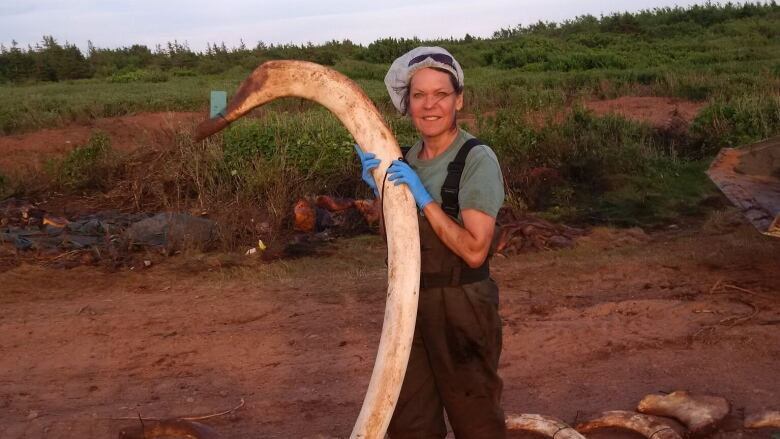
Scientists at the Royal Ontario Museum in Toronto are hoping that some good can come from three dead North Atlantic right whales, towed to a beach on P.E.I. this summer.
- Final report on right whale deaths still weeks away, say AVC pathologists
- Right whale necropsy underway on P.E.I., 2 more possible
DNA samples from the whales are now in a research lab at the ROM and bones from one of the whales are being prepared to become part of the museum's collection.
It has to have been the messiest and smelliest job I think I've ever done in my life.- Oliver Haddrath, DNA technician at the ROM
"We want to learn as much as possible and being such an endangered animal, it's important that we actually study it," said Oliver Haddrath, DNA technician at the ROM.
"While we're not ourselves looking at it, by understanding the whales better, we'll have a better understanding of how to avoid things like ship collisions."

The ROM approached Fisheries and Oceans Canada when it heard the three dead right whales were being brought to shore.
A crew from the museum and from Research Castings International (RCI) then raced to the scene on a remote beach in western P.E.I., where the necropsies were already underway.
"Luckily when we got out there, the progress through the necropsies was extremely rapid," said Jacqueline Miller, mammalogy technician at the ROM.
"They had done a lot of the base work for us that would have taken us the first few days. It was a great stroke of luck."
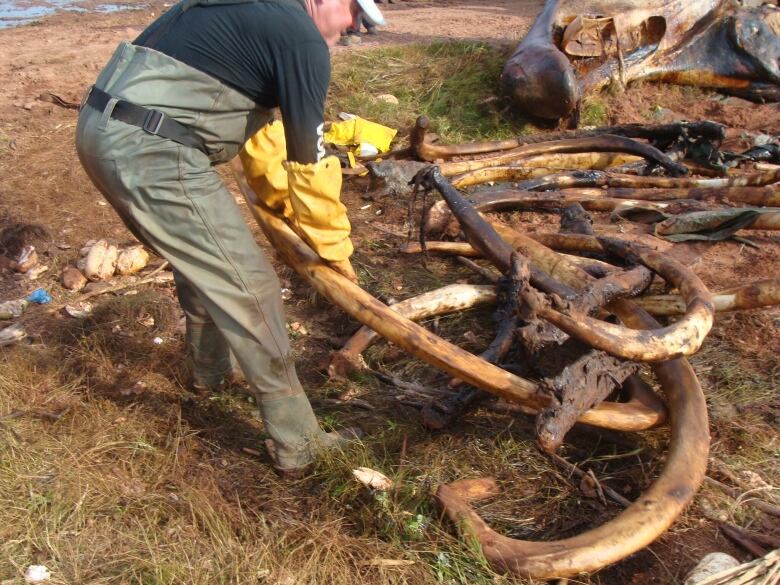
With the necropsies complete, the ROM and RCI teams got to work.
"It has to have been the messiest and smelliest job I think I've ever done in my life," said Haddrath, working on a whale carcass for the first time.
DEEP TROUBLE | Right whale in peril
After an unprecedentednumber of deaths this summer, CBC News is bringing you an in-depth look at the endangered North Atlantic right whale. This week, in a series called Deep Trouble,CBC explores the perils facing the right whales.
- 7 right whales entangled this summer, new data shows
- Snow crab fishery to keep 'sustainable' label amid endangered whale deaths
- Citizen scientists track humpback health 1 photo at a time
- Uncertain future of the North Atlantic right whale linked to its tiny prey
- What's killing right whales? P.E.I. wildlife pathologists spend summer searching for answers
- The story of whale rescuer Joe Howlett's death
- Right whale rescuers wary in wake of death, anxious for work to resume
- Disappearance of right whales from winter breeding grounds a mystery for scientists
"Once you're out there, the smell is so overwhelming, it's everywhere," added Miller.
"It's messy, it's oily, it takes a long time to get clean. You can smell it in your hotel room the next morning."

The crew used large knives, some of them custom made for whales, with blades a metre long. The process of removing the flesh is called flensing, a term from the whaling industry.
"The hardest part was doing the tail because there's a lot of muscle attachments to the bone because the tail has very powerful muscles and they're very strong and very hard to remove," said Haddrath.
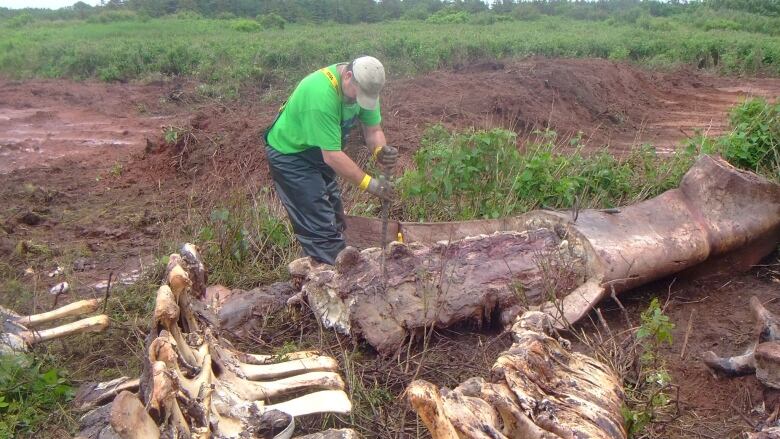
Haddrath tried to collect as many tissue samples as possible, including any internal organs that hadn't yet started to decompose.
"Initially I wanted to take a sample from the brain but the brain had already turned to more or less into a soup because of decay so there was no point in sampling that," said Haddrath.
"We're also interested in vision in the whale so we also requested that we get one of the eyes of the right whale so that we can actually examine further."
The crew had also hoped to collect baleen and the heart but thewhales had already decomposed too badly.
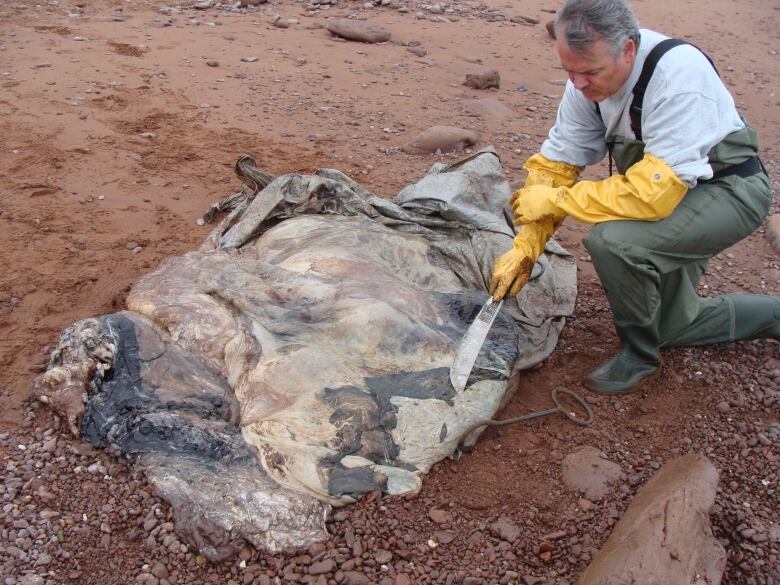
The DNA 'looks very good'
The samples are now in the museum's ultra cold freezers.
"We've done a DNA extraction on one of the samples, just to see how viable the DNA is and it looks very good," said Haddrath.

The Royal Ontario Museum opened a new exhibit in the spring of 2017 centred around ablue whale, also an endangered species.
The skeleton of thatwhale came from a similar tragic event, when 9 whales were trapped in ice in Newfoundland and Labrador in the winter of 2014.
- Empathy and awe: ROM ready to show Trout River blue whale to the world
- Blue whale heart from Newfoundland installed at Royal Ontario Museum
"We're actively pursuing doing the genome on the blue whale," saidHaddrath.
"Having a close relative of the blue whale, like the right whale, is very useful for actually studying it."

Bones to be buried for a while
The bones, meanwhile, are being processed by Research Castings International at their facility in Trenton, Ontario, where the blue whale skeleton was alsoprepared.
"The bones are sitting in compost in a container," said Peter May, president of RCI.
"We put down a layer of compost, a layer of bones, a layer of compost, a layer of bones,and they'll sit there probably for the next two to three months."

Then the bones will need to be de-greased, in tanks of water and detergent.
"The one thing we don't want is once the skeleton is mounted is to have the oil drop on visitors at the museum," said May.
RCI has prepared bones for more than ten whales, but May was struck by the circumstances that brought the right whale skeleton to his facility.
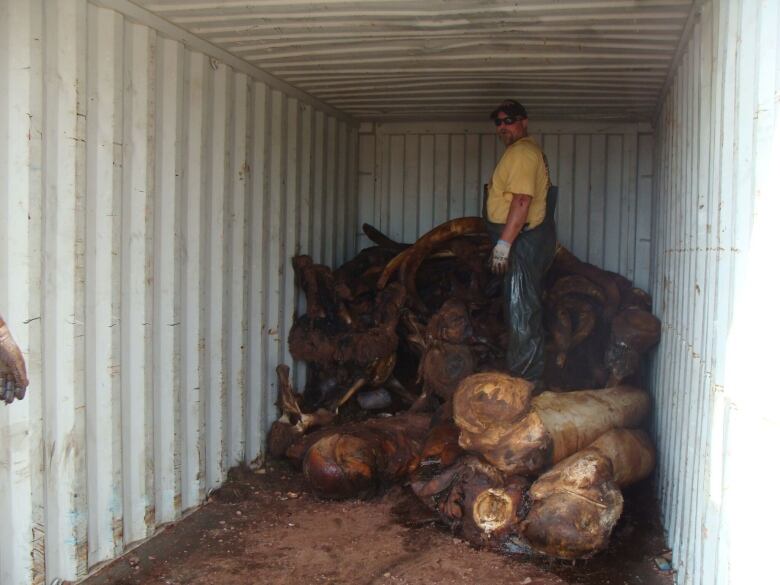
"We enjoy going out to the field to collect the animals, but there's some sadness at the same time, here you are collecting dead animals, it's not a joyous event," said May.
"Here we are putting a live mammal skeleton on display, much as we put a dinosaur skeleton on display, it's already gone extinct and these animals are going that way now."
Mature, largemale; 'Beautifully intact'
Once it is fully processed, the right whale skeleton will become part of the collection at the Royal Ontario Museum.
"It was a very large male, actually quite mature in terms of age," said Miller.
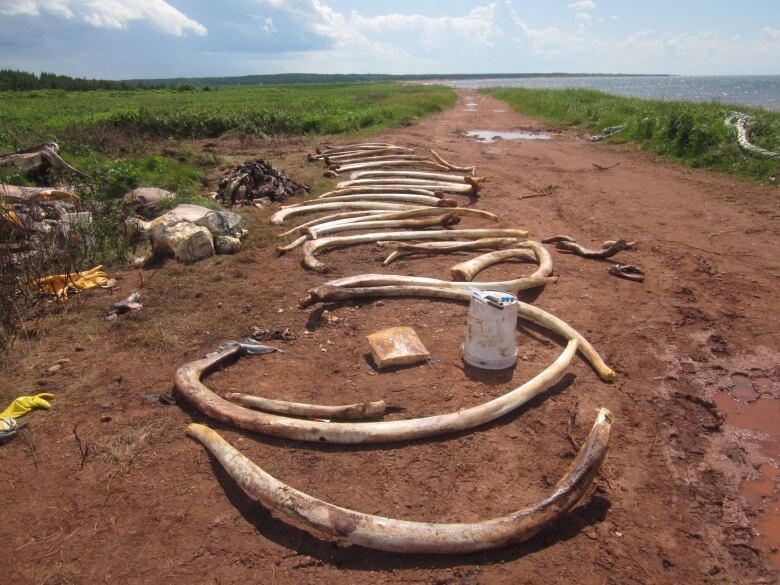
"We know that it was at least 30 years old, there's been some tracking information on it and it's believed to have fathered at least one calf."
Miller says there wasevidence of bruising in the soft tissuethat suggests the whale may have died fromblunt trauma.
"The skeleton itself is beautifully intact, it's quite wonderful how intact it was," she said.
"It's going to make a really awesome anatomical specimen when it's finally cleaned and processed."
That could take more than a year.
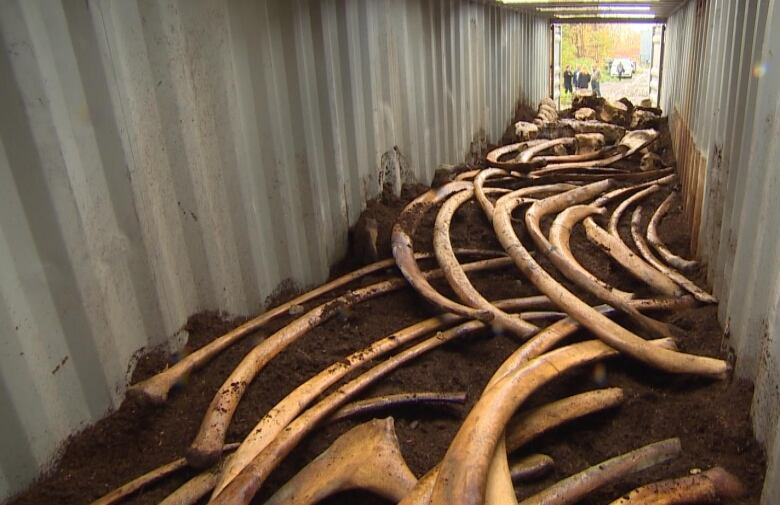
"We have a lot of patience, it's not going to go away," said Miller.
"And it's for posterity, it's meant to be an asset for the museum for future generations."
Still, both scientists are saddened that the skeleton comes as a result of a deadly summer for the endangered species.
"This is a very tragic event that so many have died," said Haddrath.
"But the only good that can come out of it is we were able to get these tissues, to be able to study its DNA, so hopefully it will provide some insights."













_(720p).jpg)


 OFFICIAL HD MUSIC VIDEO.jpg)
.jpg)



























































































